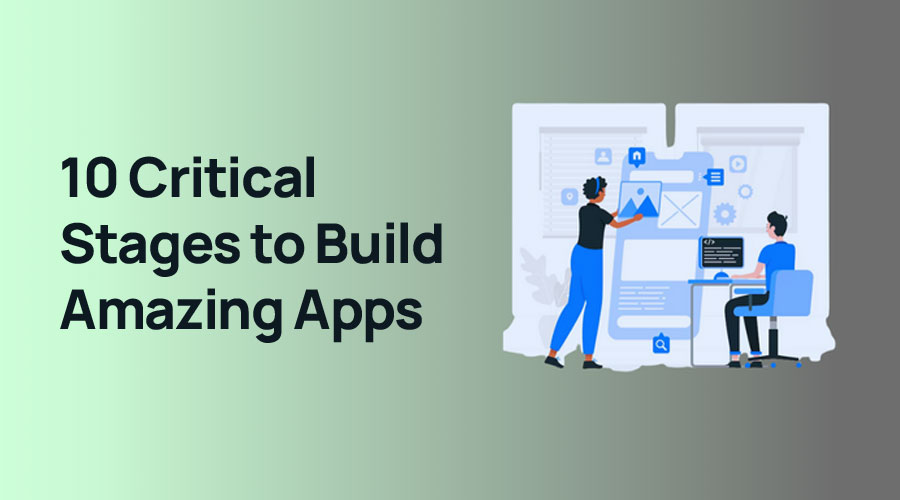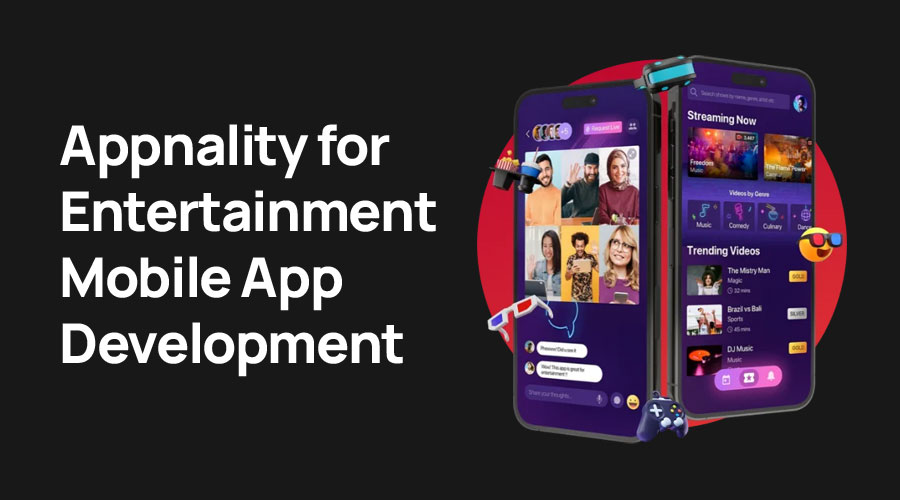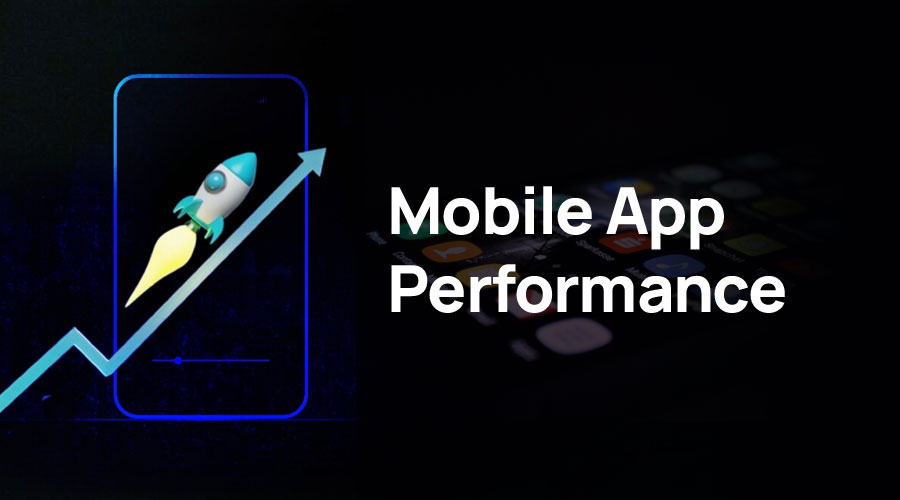Web App Development: 10 Critical Stages to Build Amazing Apps

A report by Grand View Research indicates that the global web application firewall market was valued at $4.9 billion in 2022 and is anticipated to grow at a Compound Annual Growth Rate (CAGR) of 16.8% from 2023 to 2030. The increasing demand for secure and reliable web applications fuels this expansion.
What is web app development?
Web application development is the process of building applications for use on the World Wide Web, thereby improving user experiences online. It establishes a cyclical framework for developing unique and customer-oriented solutions with Web App Development Services and blending imagination with application-specific knowledge. Just like when approaching web design for the first time or trying to learn more about it, exploring the complexity of web application development underneath the general surface of web technologies is always helpful.
Web apps also sometimes use front-end and back-end web development technologies associated with traditional websites. Front-end developers employ JavaScript, CSS, HTML, etc., to create compelling interfaces across devices. The back end may then use server-side scripting languages such as Ruby or Python, similar to web development software. This establishes common ground between the web development discipline and the web application development discipline, proves the marriage between these two disciplines, and shows that to build cohesive and fluid experiences on the web, and one must learn these technologies well.
Importance of Web Application Development Process
The web application development process is vital for creating successful and functional digital products. Here are some key reasons why this process is essential:
User Experience Optimization:
It refers to a systematic approach to developing a sophisticated interface through detailed user investigations, model creation, and successive layouts to deliver a high-quality final product for users. Thus, access, location, and flow help satisfy the requirements of the target audience and correspond to the development’s goals.
Scalability and Reliability:
The techniques and models described are adequately implemented to develop reliable, responsive, and scalable Web applications. This will ensure that the application is optimized to accommodate growth, increased traffic, and any other future changes that may be demanded without compromising efficiency.
Maintainability and Extensibility:
This aligns with making code freely available, well-documented, and maintainable so that any changes, improvements, updates, bug fixes, new additions, and other features can easily be implemented when an application is undergoing updates. This makes the application easy to modify or deploy in the future with other upcoming technologies.
Collaboration and Communication:
Problem-solving and risk management use input from designers, developers, project managers, and clients to allow for efficient problem-solving, risk sharing, and product development that fulfills both the client’s needs and the user’s demands.
Time and Cost Efficiency:
A proper web application development process better achieves project goals, decreases risk factors, and increases the effective use of resources. This consumes less time, thereby translating into reduced expenditures, which leads to improved profitability and quality of projects developed.
By adhering to the well-defined web application development process, organizations are able to produce well-designed solutions that meet clients’ needs and expectations and have the potential to become a sustaining competitive advantage for organizations seeking sustainable, value-driven, and customer-oriented web applications.
Process of Web App Development
1. Project Planning and Concept Development
Project planning is a critical part of the software project management. Focused planning guarantees resource optimization, risk management, and project success rates.
This initiation is a consulting procedure that includes many comma stakeholders.
Engaging with developers, project managers, and designers through brainstorming sessions helps shape a comprehensive plan. Defining the problem, analyzing its impact, and outlining the proposed solution are essential steps. This stage also involves setting project goals, key performance indicators and identifying stakeholders and their roles.
Critical components of project planning are breaking down overall targets into smaller, achievable milestones, estimating required resources, and identifying risks with mitigation strategies.
2. Market Research and Target Audience Analysis
Understanding your target audience is critical in software projects. Conduct thorough market research to identify their needs and ensure your solution addresses the problems. Surveys, secondary data analysis, and trend analysis help you understand user preferences. Explore existing solutions in the market, identify their shortcomings, and define how your solution will be distinct and superior.
3. Design and User Experience
The design phase transitions your project from planning to development. Project planning is an important segment in software project management. Effective planning ensures the right use of resources and risk management and increases the likelihood of the project’s success. This phase is a process of mutual decision-making by all the stakeholders involved in the project.
Design aids like Figma and ClickUp are used to create wireframes, mockups, and prototypes. The most important aspect of a user-friendly UI is its intuitiveness and quick navigation, and its application ensures this.
Branding elements like theme, color, and font are essential, and as such, they must be paid attention to and provided with universal accessibility to all users. Refine can be particularly useful for building data-intensive front-end applications, offering accessible built-in components, and integrating popular design systems like Ant Design and Material UI.
4. Setting Up the Development Environment
After the design phase, setting up a development environment is essential. Depending on your project’s framework, install the necessary tools and packages, including linters, test runners, and bundlers. Containerization platforms like Docker might also be required.
Documenting the setup process is crucial for smoothly onboarding new contributors. Refine offers project templates that integrate popular design systems and cloud platforms, simplifying the setup process.
5. Backend and API Integrations
The backend handles databases, user authentication, third-party API integrations, and data security. Choose technologies and hosting providers based on project requirements, considering factors such as popularity, licensing, maintenance, and support.
Decide between self-hosting or using third-party cloud providers like Firebase or Supabase, and choose an appropriate database. Refine provides out-of-the-box integrations with popular backend services, enhancing development speed.
6. Frontend Development
Selecting the proper front-end framework, whether React, Vue, Angular or a meta-framework like Refine, depends on your project needs. Refine is ideal for data-intensive applications, supporting routing, authentication, networking, and state management. It integrates easily with various UI frameworks, streamlining the development process.
7. Testing Processes
Testing ensures your code is secure, robust, and reliable. Write unit and end-to-end tests to catch bugs early and enhance code quality. Test mobile applications in all intended environments. Refine’s built-in components have already been tested, allowing you to focus on writing end-to-end tests.
8. Security and Performance Optimization
Security and performance are critical in web and mobile applications. Protect user data, encrypt sensitive information, and comply with legal regulations. Optimize performance by using techniques such as image optimization and code splitting. Continuous maintenance and updates are necessary to address vulnerabilities.
9. Deployment and Publishing
Deploy your app to a hosting provider or app store. To automate deployment, set up a continuous integration workflow with tools like GitHub or GitLab. Refine provides a comprehensive development and build tools setup, simplifying the deployment process.
10. Marketing and User Feedback
Marketing is essential for your app’s success. Utilize targeted adverts, content creation, and online communities to reach your audience. Collect feedback through analytics or surveys to understand user satisfaction and areas for improvement. Engaging with user feedback enhances product quality and fosters a sense of user ownership.
Conclusion
Therefore, WordPress web app development services, including design and building complex solutions where several areas should be understood and grasped if the goal is to create unique and efficient applications for end-users. As this paper outlines, front-end and back-end technologies form the basis of modern web applications; recognizing and capitalizing on the volatility of this sector of development, a user-friendly, reliable, and efficient approach to the generation, adaptation, and maintenance of applications could be the most constructively approached and developed.




